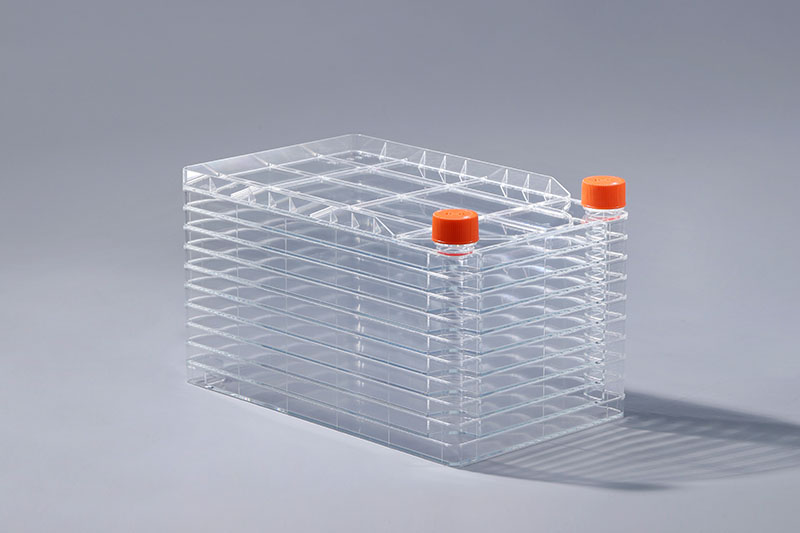The cell factory is a cell culture consumable made of polystyrene (PS) raw materials. It adopts a multi-layer structure design. Common specifications include 1 layer, 2 layers, 5 layers, 10 layers, and 40 layers. Customize the number of layers as needed. So, what production process is used for this special structure of consumables?
The injection molding process used in the cell factory mainly includes the following steps:
1. Pre-molding process:
The pre-molding process is that the plastic material is heated, transported, compacted, sheared, mixed and homogenized in the barrel to transform the material from a glass state to a viscous fluid state, so as to meet the injection molding requirements.
2. Injection molding process:
In the injection filling stage, the screw injects the melt in the storage chamber into the cavity through the nozzle, the mold runner and the gate under the thrust of the injection cylinder.
3. Compression and compression process:
Continue injection molding to fill the volume vacated by the part due to shrinkage.
4. Cooling and setting process:
After the holding pressure is over, the gate is frozen. The article undergoes a period of cooling and setting.
5. Ejection pickup process:
After the product has been cooled for a period of time, it has a certain rigidity and strength. The part is ejected from the injection mold by the ejector pin of the mold.
After the production of the cell factory is completed, each layer needs to be assembled, and then it can only leave the factory after various tests such as tightness and sterility. In order to ensure that cells can adhere better, this consumable also needs to be treated with TC on the surface to introduce hydrophilic factors.
The FAI climbed 5.9 percent year-on-year in the first 11 months of 2018, quickening from the 5.7-percent growth in Jan-Oct, the National Bureau of Statistics (NBS) said Friday in an online statement.
The key indicator of investment, dubbed a major growth driver, hit the bottom in August and has since started to rebound steadily.
In the face of emerging economic challenges home and abroad, China has stepped up efforts to stabilize investment, in particular rolling out measures to motivate private investors and channel funds into infrastructure.
Friday's data showed private investment, accounting for more than 60 percent of the total FAI, expanded by a brisk 8.7 percent.
NBS spokesperson Mao Shengyong said funds into weak economic links registered rapid increases as investment in environmental protection and agriculture jumped 42 percent and 12.5 percent respectively, much faster than the average.
In breakdown, investment in high-tech and equipment manufacturing remained vigorous with 16.1-percent and 11.6-percent increases respectively in the first 11 months. Infrastructure investment gained 3.7 percent, staying flat. Investment in property development rose 9.7 percent, also unchanged.
 English
English



















































